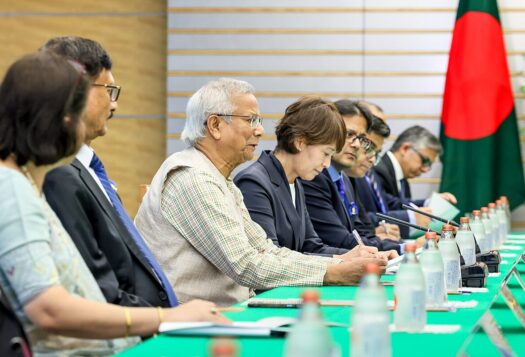
Historically, India’s approach to the global order has been grounded in the principles of pragmatism and realpolitik—a fact that has often been under appreciated by observers of international politics. In the past, India has navigated the politics of the Middle East with aplomb, managing to import arms and oil from mutually hostile states without disturbing the unstable and fragile equilibrium of geopolitical relations, as in the case of Israel and United States embargoes. India even managed to secure Israeli intelligence and weapons to navigate the 1971 India-Pakistan war, during which the United States sided with Pakistan. These experiences speak to India’s deftness in maneuvering its relationships with superpowers in pursuit of its own interests without upsetting the global order, though its recent movement towards the United States raises questions about its ability to accomplish that in the future.
Historical Maneuvering
India was a founding member of the Non-Aligned Movement (NAM), a grouping of countries that were not formally aligned with either the United States or the Soviet Union during the Cold War. The practice of its mandate was, however, limited to theory—India’s approach to international relations during the Cold War displayed a Soviet tilt, as Jawaharlal Nehru, the first Prime Minister of independent India, favored Soviet-style socialist ideals. In 1955, Nehru even undertook an exhaustive sixteen-day trip across the Soviet Union. Moreover, India constantly sought Soviet assistance in matters of security and defense, as well as economic support, continually importing Soviet arms and utilizing its assistance against a U.S.-backed Pakistan in the Indo-Pakistani war of 1971. However, after the Soviet Union’s collapse, it was only a matter of time before Russia’s diminished economic status prevented it from continuing as India’s benefactor. At the same time, the age of globalization, liberalization, and privatization of the late 1980s and early 1990s began to negatively impact the Indian economy. Thus, the fall of the Soviet Union “paved the way for Indian reinvention,” as India saw fit to shift its political, strategic, and economic interests westward at this time.
Indian Realpolitik in the Twenty-First Century
Since the fall of the Soviet Union, Indian relations with the United States have significantly improved, with the Trump administration’s recent National Security Strategy (NSS) referring to India as a “leading global power and a stronger strategic and defense partner.” The foundation for this recognition can be traced back to Bill Clinton’s trip to India in 2000 during the era of Prime Minister Atal Bihari Vajpayee. This trip sought to bring about “a closer and qualitatively new relationship” between the United States and India after a period of antipathy that followed the U.S. imposition of sanctions against India in 1998 after both India and Pakistan tested their nuclear weapons. The dawn of U.S.-India bonhomie during the Clinton administration and nurtured during the Bush administration paved the way for the historic signing of the 123 Agreement in 2008. This civil nuclear deal, although frequently critiqued, implicitly recognized India as a nuclear power despite its not having ratified the Nuclear Nonproliferation Treaty (NPT) or its being a member of the Nuclear Suppliers Group (NSG). With President Trump looking to India to help counter China in the Indo-Pacific Region—as per the vision laid out in the NSS—both sides appear confident that U.S.-India relations remain on an upward trajectory.
At the same time, India’s ties with Japan, another prominent U.S. ally, took a new turn after 2000 with the visit of Japanese Prime Minister Yoshiro Mori to India. Almost two decades later, many Japanese companies are household names in India and Japan is currently the fourth largest source of foreign direct investment (FDI) in India. Moreover, India has recently undertaken measures to strengthen this relationship, aligning itself with Japan (and the United States and Australia) in the reemerging “Quad” alliance, as well as having conducted joint anti-submarine warfare exercises in the recent past. New Delhi’s strong relations with Japan and the United States and growing ties with Australia can be viewed as a calculated effort to form an anti-China contingent in Asia, with some reports hinting that the four countries are considering a regional infrastructure scheme as an “alternative” to China’s Belt and Road Initiative (BRI).
India’s closeness with the United States and its allies has not, however, limited its capacity to be pragmatic in the foreign policy domain. For instance, India commenced formal diplomatic relations with Israel, a strong ally of the United States, in 1992. New Delhi has since become one of the largest buyers of Israeli arms, forging a strong partnership with Israel, despite its own neutral stance towards other oil-rich states hostile to Israel. Yet, while relations between Israel and India have become increasingly amiable over the years, India has maintained its realpolitik on issues relating to the Middle East. Despite the closeness between Israeli Prime Minister Netanyahu and Modi, India rejected the United States’ recognition of Jerusalem as Israel’s capital in a vote at the United Nations General Assembly. This decision signals that India, despite its growing intimacy with the United States and U.S. allies like Israel, can uphold its strategic autonomy in the contemporary context. Narendra Modi, Prime Minister of India, even recently visited Ramallah in the West Bank, though this was preceded by a historic trip to Israel.

Challenges Ahead?
While India has shifted towards a pro-United States foreign policy, its old friend Russia has also diversified its partners, having signed important agreements with Pakistan to improve military-to-military relations and construct the North-South gas pipeline. Russia’s proximity to China has also increased in the past year with Putin’s attendance of a recent meeting for BRI—an initiative that has been vehemently opposed by India. Given the continuing tensions between China and India over the Doklam plateau and the recent violence in Kashmir that has provoked antipathy between India and Pakistan, it is evident that New Delhi faces challenges in managing its relations with both of its regional adversaries. While India should be careful to avoid the outbreak of war with either country, it must also be mindful that the deterioration of these relations may harm its relations with Russia.
India’s slow-moving strategic alignments get to the heart of India’s underappreciated realpolitik. In forging new alliances and partnerships along the geopolitical spectrum, India has managed to increase its stature in the international system, fulfill its economic and military needs, and gain international support for its strategic interests vis-à-vis Pakistan and China. The future, however, remains uncertain, though it is likely that India will continue to be pragmatic without bringing disarray to the global equilibrium.
***
Image 1: MEAphotogallery via Flickr
Image 2: Mikhail Tereshchenko via Getty


